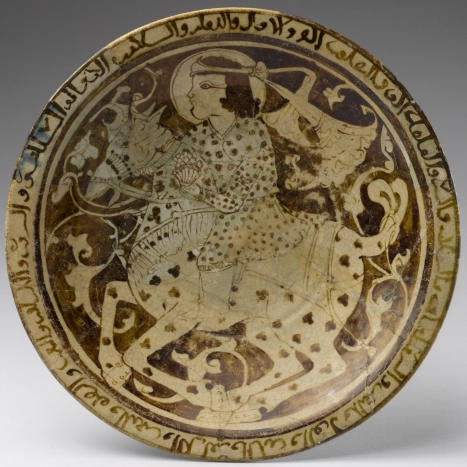|
|

Teller (Gefäßkeramik)
um 1200
Datierung engl.: c. 1200
Herkunft (Allgemein): Iran (Land)
Herstellungsort: Kaschan (Ort)
Quarzfritte, transparente weiße Glasur mit Lüsterbemalung
Höhe: 7,5 cm
Durchmesser: 34,7 cm
Wandungsstärke: ca. 0,6 cm
Ident.Nr. I. 15/60
Sammlung: Museum für Islamische Kunst
© Foto: Museum für Islamische Kunst der Staatlichen Museen zu Berlin - Preußischer Kulturbesitz
Fotograf/in: Johannes Kramer
Plate (pottery)
around 1200
Dating: c. 1200AD
Origin (General): Iran (Country)
Place of production: Kashan (place)
Quartz frit, transparent white glaze with luster painting
Height: 7.5 cm
Diameter: 34.7 cm
Wall thickness: approx. 0.6 cm
ID No. I. 15/60
Collection: Museum of Islamic Art
© Photo: Museum of Islamic Art of the National Museums in Berlin
Photographer: Johannes Kramer
Source: Museum für Islamische Kunst der Staatlichen Museen zu Berlin
| |

